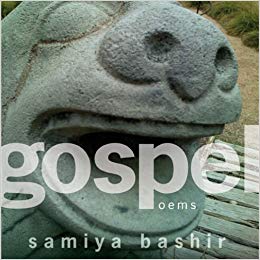3 Books Published by RedBone Press on AALBC — Book Cover Collage
 Gospel: Poems
Gospel: Poems
by Samiya BashirRedBone Press (Mar 27, 2009)
Read Detailed Book Description
Poetry. African American Studies. LGBT Studies. Lambda Literary Award finalist. GOSPEL is an ecumenical resistance song in four parts. In this passionate follow-up to 2005’s Lambda Literary Award finalist, WHERE THE APPLE FALLS, Bashir’s poems challenge truth to stare down the power of fear and paralysis. "We intended gospel to strike a happy medium for the down- trodden," said gospel music pioneer Thomas Dorsey. "This music lifted people out of the muck and mire of poverty and loneliness, of being broke, and gave them some kind of hope anyway. Make it anything but good news, it ceases to be gospel." The good news, according to Bashir, is that we are neither alone in our mess, nor alone in our grasp of the tools to heal. In this pull-no-punches collection Bashir lays down a road map, a portable flashlight, and a shaky-legged escort to usher the way toward recovered sight and strength.
"’How is it done— / remolding body into / image of body,’ writes Samiya Bashir in the poem ’Topographic Shifts,’ from her latest book, GOSPEL (RedBone Press, 2009). The poem describes an amputation performed on a baby girl born with twelve fingers and toes, but these lines make me think, of course, about the pressure so many women feel to alter our bodies: how the ’image of [the idealized] body’ worries, haunts, maims. What I love about Bashir’s work is how her poems work against this enforced correcting. Many of her poems thrum with the erotic joy of queer black bodies, and her work celebrates the lived experiences of bodies that resist ’remolding.’"—The Kenyon Review
"Bashir gathers stories and language from a range of cultural locations and weaves them into the imagistic and sonic qualities of the poems. The Norse gods make a dramatic and cacophonous appearance and, in one of her most effective rhetorical moves, Bashir utilizes a Ghanian call and response sequence that both effectively heightens the drama and energy in the poem and then brings it to rest at its conclusion. The poems of GOSPEL are rife with layered meanings while they immerse the reader in a landscape that is both familiar and reassuring as well as deeply unfamiliar and strange."—Lambda Book Report
"Gospel music, like its secular cousin the blues, never wallows in pity, but instead seeks to transcend pain and reach glory. Bashir’s book makes the same trip.it’s the word’s original meaning that I think Bashir best exemplifies in this book—good story or message—because GOSPEL is, at heart, a collection of poems that suggest we are not alone in this mess of a world."—The Rumpus
 Brother To Brother: New Writing By Black Gay Men
Brother To Brother: New Writing By Black Gay Men
by Essex HemphillRedBone Press (Mar 01, 2007)
Read Detailed Book Description
Literary Nonfiction. African American Studies. LGBT Studies. BROTHER TO BROTHER, begun by Joseph Beam and completed by Essex Hemphill after Beam’s death in 1988, is a collection of now-classic literary work by black gay male writers. Originally published in 1991 and out of print for several years, BROTHER TO BROTHER "is a community of voices," Hemphill writes. "[It] tells a story that laughs and cries and sings and celebrates…it’s a conversation intimate friends share for hours. These are truly words mined syllable by syllable from the harts of black gay men. You’re invited to listen in because you’re family, and these aren’t secrets-not to us, so why should they be secrets to you? Just listen. Your brother is speaking." This new edition includes an introduction by Jafari Allen.
Where the Apple Falls
by Samiya BashirRedBone Press (Jun 01, 2005)
Read Detailed Book Description
Poetry. African American Studies. LGBT Studies.
Finalist for the Lambda Literary Award in Lesbian Poetry.
Where the Apple Falls resides at the intersections between woman and female—both human and environmental—and the concepts to which she is often linked: death, rebirth, victim, sexual/perverse. Seasons are crucial: from the birth of Spring through Autumn’s final harvest, the work suggests a recasting of the farmer; a reclamation of both the fall and redemption/death/(re)birth on her own terms. Finally,
Where the Apple Falls highlights the resilience of strength. Even strength denied does not die. Instead, it continues to grow in power, waiting for its calling.
Where the Apple Falls reminds us to imagine, encourages us to answer the call, to revel in the beauty and possibility that we all embody, to consider our direction and route.
